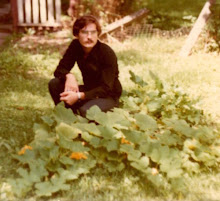Syntactics
Every object and phenomenon can be read as or through a syntagm.
Iain Chambers. Border Dialogues: Journeys in Postmodernity (Routledge, 1990). Captures my heart with this description of Jarman's Caravaggio (1986).
This is hardly parody or pastiche but rather an intelligent seizure of the traces of the past that flare up in the present.And my mind was caught by the suggestion that image culture involves a mode of perceiving that relies on making sense of sequences...
Inaugurated by the modern impact of photography and cinema, we are today in the midst of a radical permutation in our sense of vision. It involves a modification that may turn out to be a significant for how we understand the world as the introduction of geometrical perspective during the Renaissance. [...] This particular organization of matter, this sense of perspective (and position), has increasingly been supplemented and then radically modified by techniques, which are never merely "technical," in which the languages of representation are themselves increasingly foregrounded. In this marriage of technique and logos it is increasingly the syntax of such languages, rather than their referentiality, that proposes a further mutation in perspective.One can read this as anticipation of database narrative à la Lev Manovich. It is the parenthetical "position" and the emphasis on syntax that bring to mind for me the Lyotard of The Differend and there among the examples we read of the necessity of enchaînement, linking, and phrasing.
136. Enchaîner est nécessaire, un enchaînement ne l'est pas.All traces that flare up in some sense belong to a regime of discourse. They may of course travel and be taken up in some other regime. Parody and pastiche may under a specific regime become intelligent seizure.
What I carry away from all this is the attention to syntax allows for constant interrogation of context since all is removable and thus branchable.
And so for day 301
11.10.2007
